Tusayan Pueblo Ruins And Split Twig Figurines Tell Story Of People Who Once Inhabited The Grand Canyon
A. Sutherland - AncientPages.com - People have continuously occupied the Grand Canyon for at least the past 4,000 years, and they have lived in the region for the past 12,000 years. As many as 4,800 archaeological sites have already been documented, but many more still remain to be cataloged.
Over the centuries people have come and gone in and around the Grand Canyon area, occupying it for extended periods of time or staying there only briefly.
The Ancestral Puebloans, who are believed to be relatives of the modern-day Zuni, Hopi, and other Puebloan tribes, established roots at the Grand Canyon.
The Tusayan Ruins (also known as ‘Tusayan Pueblo’) are the remains of a small 12th century Ancestral Puebloan village site located within Grand Canyon National Park, Arizona. It is one of the best-documented archaeological sites of the region.
The ruins are considered to be one of the major archeological sites in Arizona.

Anasazi food storage building ruins at Tusayan Pueblo — Grand Canyon area/Large kiva Image via Wikipedia
Both the ruins of the village and the local Tusayan Museum that displays pottery, seashell bracelets, corncobs, arrowheads along with original split-twig figurines, give us an insight into the lives of a thriving Anasazi community with a rich history.
Historians believe that the Tusayan settlement numbered only about 30 people and was in occupation for only a quarter of a century.
They made their own tools, whether for cooking or hunting, from stone, bone, and antler. Stone grinders were used by them to grind corn and stone arrowheads were used as weapons.
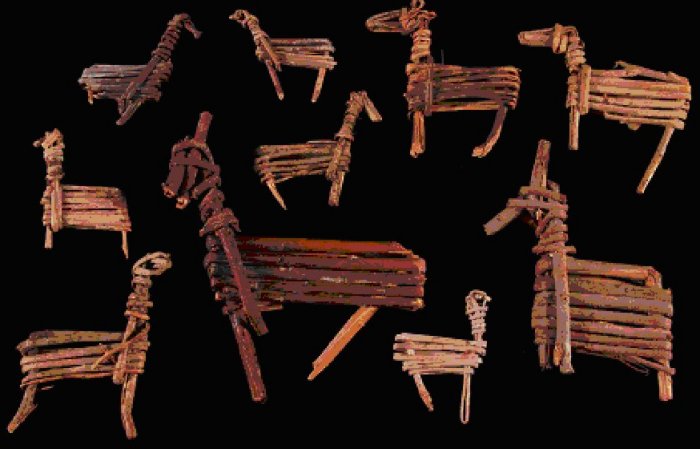
Split twig figurines – an important part of the Desert Culture – represent the oldest record of human occupancy of the Grand Canyon, some dating back to at least 4,000 years. Researchers believe that the small effigies depict several animals very common in the Grand Canyon even today.
It is believed that the effigies were made as part of a ritual ceremony that was carried out before a hunt, to ask for the blessings of the animal’s spirits before taking their lives.
The so-called split twig figurines (image above) date back 2,000 to 4,000 years. They were not found at Tusayan Ruin itself, however, these artifacts were discovered in many other caves in the Grand Canyon. They provide proof of the long human presence at the Grand Canyon and its use by Native Americans.
The ‘Tusayan Pueblo’ settlement consisted of a central plaza surrounded by living quarters, kivas, and storage rooms. The plaza faced south to catch the sun during cooler seasons.
The living quarters consisted of a single story of rock, adobe, and wood with about 3 or four main rooms. Storage rooms held food that was dried to preserve it during harsh winter months.
The only source of transportation for these Anasazi people was on foot. Everything that these people ate had to be gathered, harvested, or killed by them.

The walls of ancient rooms where villagers stored food and other items can still be seen along the Tusayan Ruin trail near the Tusayan Museum. Photo: Sarah Bohl. via ASU
Among ruins there are still preserved ceremonial structures, that modern Puebloans use even today in diverse festivals and religious ceremonies. The structures are believed to represent the Sipapuni, a geological feature on the floor of the Grand Canyon that many Hopi believe is the place where they entered into this world.
These people lived during the Pueblo II Period (900 AD to 1150 AD), which was the second pueblo period of the Ancestral Puebloans of the Four Corners region of the American southwest. They managed to survive into the Pueblo III era, an important period in the development of Puebloan communities, which gradually began to build multi-storied pueblo or cliff-side talus house communities and lived in large cliff-dwellings.
Written by – A. Sutherland - AncientPages.com Senior Staff Writer
Copyright © AncientPages.com All rights reserved. This material may not be published, broadcast, rewritten or redistributed in whole or part without the express written permission of AncientPages.com
Expand for referencesMore From Ancient Pages
-
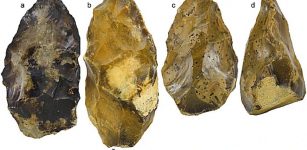 Northern France Was Already Inhabited More Than 650,000 Years Ago
Archaeology | Sep 18, 2019
Northern France Was Already Inhabited More Than 650,000 Years Ago
Archaeology | Sep 18, 2019 -
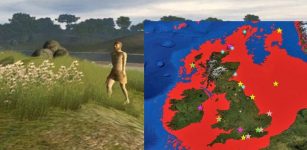 Could Doggerland Be Europe’s True ‘North Atlantis’ Of Stone Age?
Featured Stories | Nov 19, 2018
Could Doggerland Be Europe’s True ‘North Atlantis’ Of Stone Age?
Featured Stories | Nov 19, 2018 -
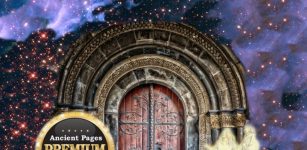 Your Destiny Is Engraved And Stored – Sacred Ancient Sources Reveal – Part 1
Ancient Mysteries | Jul 10, 2018
Your Destiny Is Engraved And Stored – Sacred Ancient Sources Reveal – Part 1
Ancient Mysteries | Jul 10, 2018 -
 Mystery Of The Seven Sages In Ancient Myths And Legends
Featured Stories | Feb 20, 2016
Mystery Of The Seven Sages In Ancient Myths And Legends
Featured Stories | Feb 20, 2016 -
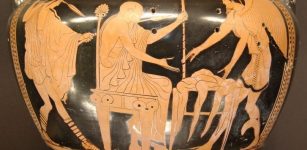 Prophet King Phineus Revealed The Future To Humans And Unleashed God Zeus’ Fury
Featured Stories | Nov 20, 2019
Prophet King Phineus Revealed The Future To Humans And Unleashed God Zeus’ Fury
Featured Stories | Nov 20, 2019 -
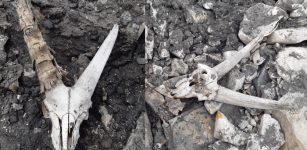 7,000-Year-Old Ibex Remains Found Under The Ice In Italy Are 1,700 Years Older Than Ötzi!
Archaeology | Dec 14, 2022
7,000-Year-Old Ibex Remains Found Under The Ice In Italy Are 1,700 Years Older Than Ötzi!
Archaeology | Dec 14, 2022 -
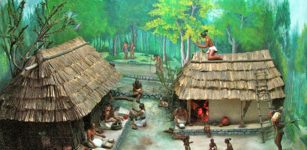 Daily Life Of Ancient Maya
Ancient History Facts | Oct 12, 2020
Daily Life Of Ancient Maya
Ancient History Facts | Oct 12, 2020 -
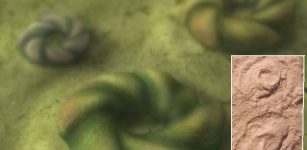 Earth’s First Animals Had Particular Taste In Real Estate
Evolution | May 10, 2023
Earth’s First Animals Had Particular Taste In Real Estate
Evolution | May 10, 2023 -
 Perforated Shells Were Used By Humans 120,000 Years Ago
Archaeology | Jul 10, 2020
Perforated Shells Were Used By Humans 120,000 Years Ago
Archaeology | Jul 10, 2020 -
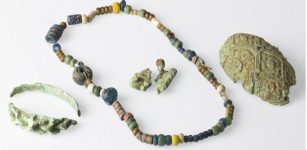 Puzzling Jewellery From Grave Of High Status Viking Woman Delivered At Museum’s Door
Artifacts | Jul 23, 2022
Puzzling Jewellery From Grave Of High Status Viking Woman Delivered At Museum’s Door
Artifacts | Jul 23, 2022 -
 New Fossil Link In Bird Evolution Discovered
Evolution | Sep 7, 2023
New Fossil Link In Bird Evolution Discovered
Evolution | Sep 7, 2023 -
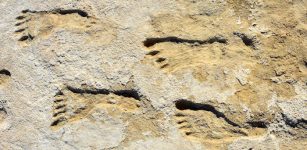 There Is A Problem With The Footprints Claimed As Evidence Of Ice Age Humans In North America – Scientists Say
Archaeology | Nov 16, 2022
There Is A Problem With The Footprints Claimed As Evidence Of Ice Age Humans In North America – Scientists Say
Archaeology | Nov 16, 2022 -
 Denisovan Genetic Heritage Could Affect The Mental Health Of European And Asian Populations
DNA | Oct 31, 2023
Denisovan Genetic Heritage Could Affect The Mental Health Of European And Asian Populations
DNA | Oct 31, 2023 -
 Breakthrough! Evidence Of Previously Unknown Prehistoric Humans Who Lived In Europe More Than 1.1 Million Years Ago!
Evolution | Mar 13, 2025
Breakthrough! Evidence Of Previously Unknown Prehistoric Humans Who Lived In Europe More Than 1.1 Million Years Ago!
Evolution | Mar 13, 2025 -
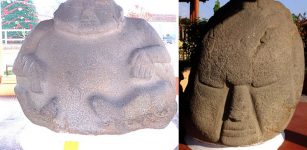 Mystery Of Ancient Magnetic Potbelly Statues In Mesoamerica Revealed – But Something Is Still Wrong
Archaeology | Jul 30, 2019
Mystery Of Ancient Magnetic Potbelly Statues In Mesoamerica Revealed – But Something Is Still Wrong
Archaeology | Jul 30, 2019 -
 Evidence Of The Biggest Ever Solar Storm 14,300 Years Ago – Found In Ancient Tree Rings
Earth Changes | Oct 9, 2023
Evidence Of The Biggest Ever Solar Storm 14,300 Years Ago – Found In Ancient Tree Rings
Earth Changes | Oct 9, 2023 -
 11,000-Year-Old Human Remains Found At Heaning Wood Bone Cave In Britain
Archaeology | Jan 25, 2023
11,000-Year-Old Human Remains Found At Heaning Wood Bone Cave In Britain
Archaeology | Jan 25, 2023 -
 Ginnungagap From Which The World, Gods, Humanity And All Life Emerged In Norse Beliefs
Myths & Legends | Dec 11, 2024
Ginnungagap From Which The World, Gods, Humanity And All Life Emerged In Norse Beliefs
Myths & Legends | Dec 11, 2024 -
 Previous Studies Of European Genetic Ancestry May Be Inaccurate – Re-Evaluation Is Needed
DNA | Nov 8, 2023
Previous Studies Of European Genetic Ancestry May Be Inaccurate – Re-Evaluation Is Needed
DNA | Nov 8, 2023 -
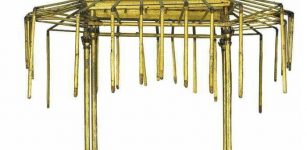 Was Tutankhamun’s Chariot Equipped With Its Own Sunshade?
Archaeology | Jun 27, 2019
Was Tutankhamun’s Chariot Equipped With Its Own Sunshade?
Archaeology | Jun 27, 2019

